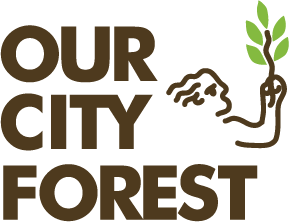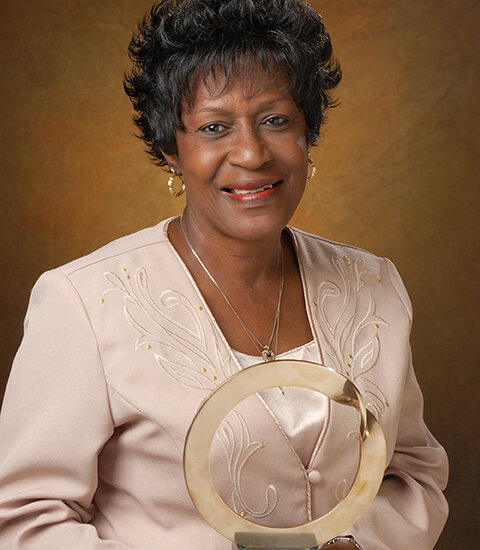The first thing you will notice as you enter Liberia will be the vast, dark green rainforest that covers most of the country. Liberia hosts the rainiest capital city in the world. Monrovia and the surrounding area receive 5 to 6 meters of rain annually. It is a land of dense foliage and is home to 16 distinct indigenous tribes of people who call it home. Animals such as the endemic pygmy hippo, forest elephant, African civet, chimpanzee, and pangolin also reside there. Liberia is roughly the size of the state of Tennessee with a population of about 4 million people. It is a modest country but is rich in natural resources and vibrant culture.
Liberia is one of the 16 countries considered to be located in West Africa (Map of Liberia -Britannica)
I had the immense pleasure of living and working in Liberia as a teacher for three years. The culture is warm and inviting. The country shares close ties to American history. Most people in America can hardly identify the small West African country on a map, let alone describe its shared past with America who founded the country in the 19th century. The founding of Liberia in the early 1800s was motivated by the domestic politics of slavery and race. It is distinctly tied to the history of America and of the Atlantic Slave Trade which dominated American economics of the 18th century.
In 1816 the American Colonization Society (ACS) was founded. Members had various reasons for supporting this organization from racists who saw a growing number of freed slaves as threats to American democracy to abolitionists who wanted to give back sovereignty to the disenfranchised blacks of America. Mid-Atlantic states like Maryland and Virginia were large supporters of the movement. President Monroe helped arrange public funding to secure land on the coast of West Africa to create a new nation of freed slaves. By 1820, freed blacks sailed to the area which is now Sierra Leone to secure land for a new Republic, using the U.S. Constitution as a blueprint for their own government.
West Africa however, is not just a place of pygmy hippos and civets but hosts many parasites, diseases, and viruses that killed most of the settlers. Malaria, a parasitic infection that continues to kill hundreds of thousands each year to this day, was one of the biggest killers for settlers. By 1824, the settlers negotiated for a piece of land and named it Monrovia in honor of the president who continued to assist the ACS with funding and naval support. By 1838, Monrovia had been fortified because local tribes protested the community. Within the next decade, Liberia declared itself independent from America and was the first Republic established in the continent of Africa. By 1848, Liberia’s sovereignty was recognized by many other countries.
The U.S. stopped supporting its colony by the 1860s. A mass exodus of blacks from America never happened as funding declined and, over the decades, public opinion shifted. However, over the next few years over 18,000 blacks sailed to Liberia. The settlers carried with them their American culture and did not integrate with the local cultures of West Africa. They utilized their education and access to economic trade with America, Britain, and France to exploit and dominate local tribes in Liberia. These people are now called Americano-Liberians and they embodied many of the negative aspects of Western culture which had initially led to the Atlantic Slave Trade. This created immense tensions with local cultures who were also experiencing general colonization and fragmentation of land by the U.S. and Western Europe on the continent. These issues continued to be ignored for decades.
The 16 Tribes of Liberia.
Liberia established itself as a prominent ally to America and the West over the next few decades and supported the Allied powers in the World Wars. It secured international investments and developed its trade and infrastructure into the 20th century. Profits were sequestered with the Americano-Liberians in the capital and further divided the local populations from the privileged few. In 1980 these divides and political tensions came to a head, resulting in a military coup that toppled the democratic leadership of Liberia. President Tolbert and his cabinet were removed by Samuel Doe, a general at the time in the army, and his forces. Doe represented the repressed indigenous population that had been subservient to the privilege of Monrovia for decades. Doe took power for himself and remained dictator for almost 10 years. America was hesitant to intervene as Liberia represented a stronghold against communist ideologies in the 1980s. America tried to help restabilize the country under Doe’s rule and advised elections to reestablish democratic rule for many years. Elections proved unsuccessful as Doe held power, which led to the First and Second Civil Wars of Liberia in the 1990s. Various tribes and factions fought for power throughout the country. Doe was killed by one of these faction leaders.
Former President Samuel K. Doe, holding a walkie-talkie, after the 1980 coup that toppled President William Tolbert Jr.
War enveloped the country. Between Doe’s coup in 1980 to the end of the Second Civil War in 2003 over 250,000 people were killed. Child soldiers, drug use, and civilian death plagued the country. The main power plant, Mt. Coffee, as well as all roads were destroyed. Over 1 million people fled to Sierra Leone, Guinea, or Cote D'ivoire for safety. The conflict ended with the United Nations (UN) and the Economic Community of West African States (ECOWAS) intervening to negotiate peace. Liberia emerged tattered and broken.
The peace agreement led to democratic elections in 2005. Women were instrumental in the cease-fire of the civil wars. They rallied together and helped stop the violence. Because of the involvement of women and their activism, Liberia elected the first female head of state in Africa, Ellen Johnson Sirleaf. She had experience working in finance under the Tolbert Administration and had fled during the war. During her time abroad, she gained experience with the World Bank and continued her education in America at Harvard University. She got straight to work to reconstruct Liberia from the ground up. Reconstruction was slow, but Sirleaf managed to increase foreign investment, reopen the port, and sustain peace during her two terms.
Ellen Johnson Sirleaf in 2016.
“The size of your dreams must always exceed your current capacity to achieve them. If your dreams do not scare you, they are not big enough.”
Tragedy struck Liberia again in the form of a viral epidemic. In 2014, Ebola swept through West Africa, killing over 15,000 Liberians. This drastically reduced foreign investment, and highlighted the shortcomings of the fragile economic stability that had been built since the end of the Civil War. The healthcare system of Liberia buckled and could not manage the outbreak. Liberia and other West African nations relied on other countries for support to tackle the epidemic. By the following year, the region quelled the outbreak, but the disease scared off investors, and development efforts slowed dramatically in the following years.
Liberia continues its struggle to develop and improve life for its citizens. There is only one paved road in Liberia that connects 6 of the 15 counties. The reconstruction of the Mt. Coffee powerplant has been undergoing development for many years. The value of the Liberian Dollar is unstable, and often falls without warning. Trade with neighboring countries is difficult, but slowly expanding. Despite these challenges, the Liberian people remain resilient. The culture’s warmth has endured extreme hardships. The people are welcoming and the youth are passionate and optimistic about the future. Many challenges are still ahead for the small West African country, but the embedded patience and perseverance of the Liberian people will steadily advance them forward.
My time in Liberia was full of expanding moments. I saw a culture that was warm, accepting, helpful, and passionate about building Liberia back up. The youth are hopeful and curious, and as internet connectivity increases throughout Liberia, they get to participate in the world conversation online on social media and learn from e-books. Life is difficult in Liberia, but it continues nonetheless. Rubber and cacao continue to be exported, iron is mined in the Northern mountains, trade continues out of the maritime ports and with neighboring Sierra Leone, Guinea, and Cote D'ivoire. The relationship with the world community and regional partners has blossomed as efforts from ECOWAS and the UN have stabilized the region. Liberia sits at a precipice, ready to spring up from the troubles of its past to embrace its developing character.
Monrovia, Liberia.
Liberia continues to share close ties to America. Many people who fled during the war still have family in the States, and the two countries share a cultural bond through our history. Liberia was the continent’s first modern-day Republic and has shown its strength with the first peaceful transition of power in over 74 years. In 2018, President Sirleaf ended her two terms under the Liberian Constitution, and President Weah was voted in. During my time in Liberia, I have heard the country referenced as ‘America’s step-child’. The way the U.S. has silently neglected its African colony reflects the hidden aspects of racism buried deep within our culture. Most U.S. citizens cannot label a map of African nations, let alone learn of the shared past between Liberia and the U.S.A. It is a shame because many Liberians share a reverence for America. We share similar values, culture, and interact more and more in virtual spaces. Fostering the continued friendship between the two nations is beneficial, but it will take some advocacy on behalf of Americans to share the story of our shared pasts and educate others about the interconnectedness of all of us as citizens of the world.
Sources:
U.S. Department of State, Founding of Liberia, 1847. history.state.gov/milestones/1830-1860/liberia#:~:text=In%201816%2C%20a%20group%20of,the%20world%20at%20that%20time.
Wing Shick, Tom. “A Quantitative Analysis of Liberian Colonization from 1820 - 1843 with Special Reference to Mortality.” University of Wisconsin, University of Wisconsin, 1970, pp. 1–39.














